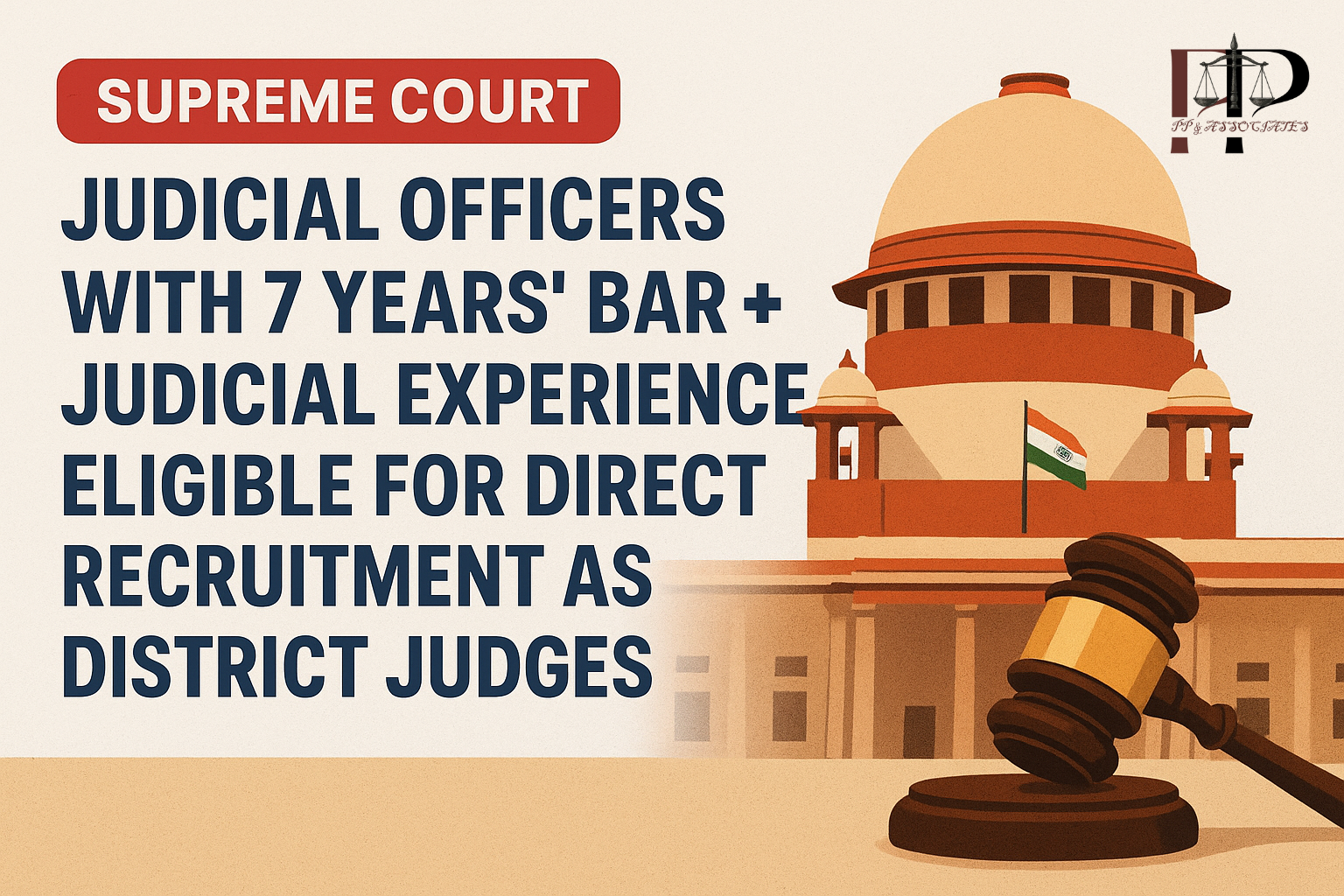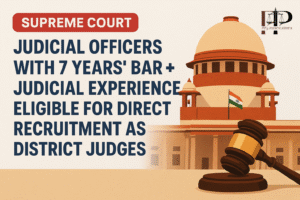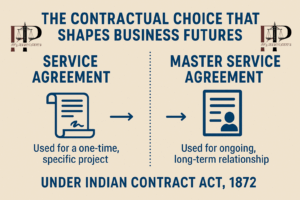Introduction
In India, there has been a constitutional movement in terms of judicial recruitment. In a significant case, the Supreme Court ruled that judicial officers with a combined seven years of experience—as lawyers and judicial officers—as of the date of application are eligible for direct recruitment as District Judges. This broadens prospects for people currently in the legal system, ensuring that merit, expertise, and justice lead development.
In this blog article, we will walk you through the Supreme Court’s rationale, the ramifications for applicants and state judicial agencies, and what comes next.
History and Culture
- Under Article 233(2) of the Indian Constitution, direct recruitment (the “bar quota”) to the position of District Judge has generally been limited to advocates who have practiced for at least 7 years.
- Over time, disagreements and judicial interpretations arose concerning whether persons already in the subordinate judiciary might take use of this approach, particularly when their prior bar expertise was mixed with judicial service.
- A previous 3-judge bench ruling in Dheeraj Mor vs. High Court of Delhi declared that civil judges cannot seek direct appointment to District Judge from the bar quota (once in service, they lose their bar route).
- A three-judge bench (headed by CJI Gavai) referred the case to a larger Constitution Bench to resolve the issue.
Key Supreme Court Holding
- A five-judge Constitution Bench (CJI BR Gavai, Justices MM Sundresh, Aravind Kumar, SC Sharma, and K Vinod Chandran) issued the ruling. Their main conclusions:
- Combined experience counts. A judicial officer who has previously served as an advocate and then as a judicial officer for seven years or more is qualified to apply through the direct recruitment route.
- Eligibility will be assessed at the time of application. The timing of the application is important – by the time one applies for a District Judge, the overall experience should be at least 7 years.
- Minimum age requirement. The court required that in-service candidates applying through this procedure be at least 35 years old.
- Prospective applications only. The ruling will not apply retrospectively to processes that were already underway prior to this judgment.
- State rulemaking directive. The Court ordered that state governments revise their recruiting procedures for judicial services to reflect this shift, ensuring that in-service candidates with combined experience are not unfairly denied.
Reasoning and Interpretation
- The Bench emphasised the importance of interpreting Article 233 purposefully (rather than literally) in order to increase administrative efficiency and attract qualified candidates.
- The Court ruled that the bar-route requirement should not unfairly punish those who have already joined the judiciary after practicing law.
- It was remarked that the previous stiff barrier (from Dheeraj Mor) could unfairly limit participation by worthy in-service candidates and impair recruiting quality.
Implications for Stakeholders: Judicial Officers and Advocates.
- Those who have served as both advocates and judicial officers now have a clear path to the District Judge cadre, provided they match the age and experience requirements.
- To show eligibility when applying, aspirants should keep clear records of their bar practice and judicial service periods.
For State Governments and High Courts
- They must amend recruitment standards to comply with this order, particularly in defining qualifying criteria for direct recruitment to District Judge positions.
- Future recruitment announcements must include both the combined experience clause and the minimum age requirement.
For ongoing/pending recruitment processes.
- Any selection or recruitment process that was already underway prior to this judgement will be unaffected, as the Court only limited its effect prospectively.






